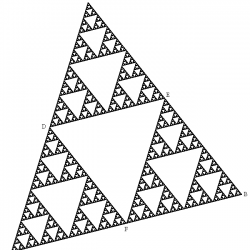 A diorama is a type of model in which some type of situation is staged. In other words, it is a normally small scenic space that serves to represent very diverse realities in three dimensions, such as nativity scenes, historical events, natural habitats, urban spaces, etc.
A diorama is a type of model in which some type of situation is staged. In other words, it is a normally small scenic space that serves to represent very diverse realities in three dimensions, such as nativity scenes, historical events, natural habitats, urban spaces, etc.
These models are commonly used in the school environment, but also in museums, in exhibition halls or among collectors who want to stage their love for a specific subject.
As for the word diorama, it comes from the Greek and literally means through sight.
The appearance of the first dioramas
At the beginning of the nineteenth century there was neither photography nor cinema. In that context, the theater was the most popular and socially recognized show. The invention of the first diorama is attributed to the Frenchman Louis Daguerre, who devised a visual spectacle in which the spectators observed animation scenes that changed in appearance with modifications to the stage and light plays. The diorama is a variant of theatrical scenography and is considered a forerunner of cinematography.
The purpose of dioramas
The purpose of these three-dimensional constructions is twofold: to facilitate the teaching of a subject in the academic field and, in parallel, to communicate an idea through an entertaining format. This type of model is considered a very useful teaching tool for children in the first years of school.
In the learning process of the little ones, theoretical explanations can be boring and not very dynamic. For this reason, dioramas become a strategy that combines the rigor of information with entertainment.
Whoever observes a diorama is visualizing a scene that represents a reality and in this learning process the words are not important. It could be said that these models are pedagogically useful as long as they are accompanied by an explanation of their content.
To manufacture any diorome it is necessary to previously carry out an investigation on what are the elements that must integrate it and what ideas are communicated with them. As is logical, the students themselves can be the protagonists in their manufacture.
Some of its variants
In general, the scale of the dioramas is reduced, since in this way the interaction between the observer and the scene represented is facilitated. However, sometimes they are close to reality in size.
The modalities are very broad: in showcases so that the public does not manipulate the content, in boxes with variable dimensions, book dioramas that when opened stage a story, in the form of a card, etc.
In the world of collecting
A specific area that can be observed lies in the field of collectible figures, mainly based on movies or comics, by means of which scenes are represented, giving an extra value to the characters, given the pose, situation and base that they accompany.
Companies such as Kotobukiya, Iron Studios, or Sideshow are some of the main references in this art, from creations in sizes that vary between 1/4 and 1/10 (the latter characteristic in the lines of Iron Studios). There are already larger sizes, up to 1/1, which represents a real vision of the personality and scene, but since in these cases many elements participate, the dimension that is most frequently appreciated is 1/6.
Photo: Fotolia - TwilightArt









